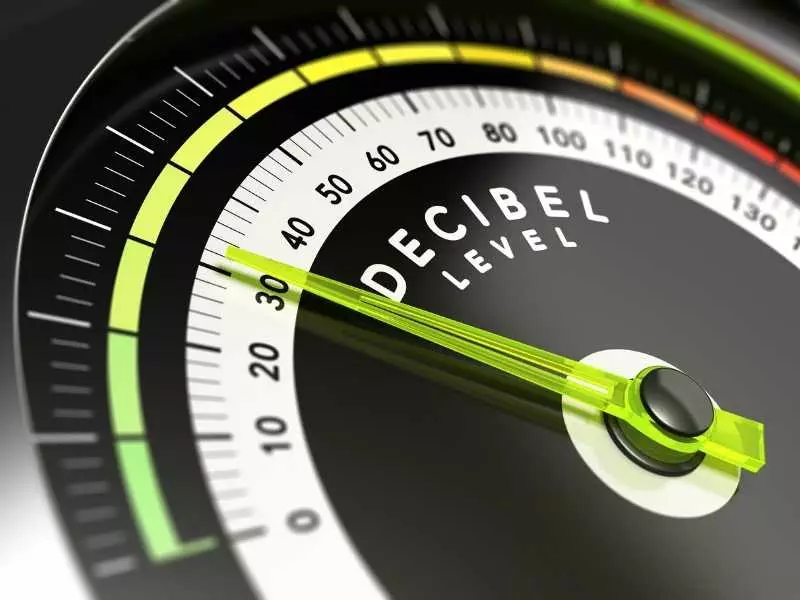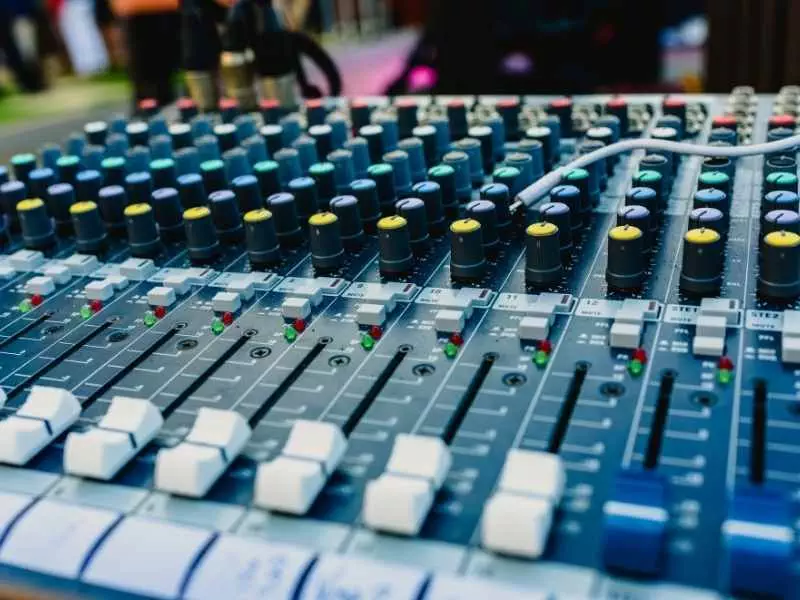

This is an informative article about the decibel scale and how it is used to measure sound intensity. It also explains the measurement units of sound, including decibels.
It’s time to learn more about the decibel scale and measurement units used to measure sound intensity!
Keep reading to learn more about the best ways to protect your ears.
The human ear is an incredibly flexible hearing device. It has a smart built-in mechanism that reduces its own sensitivity as the sound level goes up and it also has the extraordinary ability to handle a vast range of sound power levels.
It can hear the sound of a coin dropping close-by as well as the booming of a jet engine miles away.
Affiliate Disclaimer
As a Amazon Affiliate, we earn from a qualifying purchase
In A Hurry?
If you require the best hearing protection and do not want to read the entire article, below are my recommended products.
Last update on 2023-11-29 / Affiliate links / Images from Amazon Product Advertising API
The decibel (symbol: dB) is a relative unit of measurement equivalent to one-tenth of a bel (B). It is used to exhibit the ratio of one value of a power or root-power quantity to another on a logarithmic scale. A logarithmic quantity in decibels is called a level.
Two signals whose levels vary by one decibel have a power ratio of 101/10. Zero decibels (0 dB) is the lowest sound audible to a healthy human ear. From there, every increment of 3 dB means doubling of sound power or acoustic intensity.
Decibel’s definition originates from the readings of power in telephony of the beginning of the 20th century in the Bell System in the United States of America. One decibel is one-tenth (deci-) of one bel, named as a tribute to Alexander Graham Bell; however, the bel is rarely used.
Today, the decibel is used for a wide spectrum of measurements in science and engineering, particularly in acoustics, electronics, and control theory. In electronics, the gains of amplifiers, attenuation of signals, and signal-to-noise ratios are usually measured in decibels.

The relative loudness that we perceive isn’t something that can be objectively measured; it depends on the individual. Most of us identify a particular sound to be two times as loud as another one when they are about 10 dB apart; for example, you will find a 60-dB air conditioner twice as loud as a 50-dB refrigerator.
Yet that 10-dB variation is actually a ten times increase in intensity. A 70-dB dishwasher will sound approximately four times as loud as the 50-dB refrigerator, when it comes to acoustic intensity, the sound it makes is 100 times as strong.
Here's another example: If the sound from one typewriter registers 60 dB, then ten typewriters clicking would register 70 dB (not 600 dB!), and they would sound only two times as loud as one machine. You would need 100 typewriters to attain a noise level of 80 dB, and together they would sound only four times as loud as a single typewriter.
The possibility for a sound to damage hearing is proportional to its intensity, not its loudness. That's why it's delusive to rely on our subjective perception of loudness as a sign of the risk to our hearing.
The following infographic shows a list of the various noises when you are out and about. Any noise over 70-80db over a long period of time may cause damage to your hearing. A noise of over 120dB may cuase immediate harm to your ears

Here are some linear and non-linear sound levels in our circumambience :
|
Decibels |
Intensity (In watts per sq/m) |
Type of sound |
|
0 |
10−12 |
Dead silence |
|
10 |
10−11 |
Soundproof room |
|
20 |
10−10 |
Studio |
|
30 |
10−9 |
Lecture room |
|
40 |
10−8 |
Quiet room in a home |
|
50 |
10−7 |
Restaurant/private office |
|
60 |
10−6 |
Engaging in a conversation/ work office |
|
70 |
10−5 |
Telephone bell/street noise |
|
80 |
10−4 |
The noise inside of a car |
|
90 |
10−3 |
The noise inside of a bus/truck |
|
100 |
10−2 |
Electric saw |
|
110 |
10−1 |
Orchestral music |
|
120 |
1 |
Loud rock concert |
|
130 |
10 |
Artillery fire (pain threshold) |
The phon is a non-regular noise unit that is intended to reflect perceived loudness, and is based on psychoacoustic tests in which volunteers were asked to adjust the decibel level of a baseline tone of 1 kHz until it was the equal loudness as the signal being measured.
So for instance, if a sound is 70 phons, that means it sounds as loud as a 70-dB, 1-kHz tone. The dBA scale is now largely used rather than phons. The sone is a more intuitive measure of loudness, because a doubling in the number of sones equals a doubling in loudness that you perceive(unlike the logarithmic phon scale). Noise levels of household fans are usually measured in sones.
Measuring noise levels relating to loud noise at work are usually given in dB(A) or dB(C) - those frequency weightings are applied to the decibel measurements (A and C frequency weightings), actually they are decibel scale readings that try to replicate the sensitivity of the human ear to various sound frequencies.
A sound level meter is the device usually used to measure noise levels on the decibel scale. Several factors affect the noise level reading:
In order to have the most use of the reported sound value, you need to take all of the mentioned factors in account, and state the conditions in which the reading was taken.

This article goes into the basics of decibels and their use in measuring sound. Decibels (dB) are a logarithmic unit of measure which express the ratio between two quantities of power, such as sound pressure or electrical power. The decibel scale is not linear but rather follows the well-known “bell curve” distribution.
A person’s hearing threshold changes with age, being most sensitive around age 20, and gradually becomes less sensitive. Once the threshold is reached, it takes a much greater intensity of sound to perceive or hear it.
About half of people in the U.S between ages 30 and 70 have problems hearing high frequency sounds due to age-related hearing loss. Although not everyone suffers from such hearing loss, it is still a good idea for most people to wear ear protection when exposed to loud sounds, as this type of noise does pose a risk in terms of hearing damage.
Last update on 2023-11-29 / Affiliate links / Images from Amazon Product Advertising API
A decibel (dB) is a unit of measure used to express the magnitude of a sound.
A sound with a volume of 20 dB will be ten times louder than a sound with a volume of 10 dB.
70 dB is a comfortable level. A comfortable decibel level is one that allows you to continue working, listening to music, or engaging in other activities without feeling nuisance or discomfort.
It’s important to find a level that is neither too quiet nor too loud – and there is no universal answer for this.
Some people prefer a low-level hum, while others find it too quiet and need the level to be higher for work or conversation. To get an idea of what is considered comfortable, try varying the volume on your speakers or headphones until you find a level that feels just right.
A sound level of 0 dB means you are within the range of human hearing.
When the dB is positive, the sound is slightly louder than the threshold, and when dB is negative, you're a bit softer than that threshold
If you require more information, please check these references
The Journal of the Acoustical Society of America , article, "asa.scitation.org", retrieved on, Tue 01-December-2020
https://psycnet.apa.org/record/1936-05651-001 , article, "psycnet.apa.org", retrieved on, Tue 01-December-2020
On the Validity of the Loudness Scale , article, "asa.scitation.org", retrieved on, Tue 01-December-2020
Please enter search query below:
EarsToday is a participant in the Amazon Services LLC Associates Program, an affiliate advertising program.

Experience : Hi, I am Nick, and I have suffered with ear problems my whole life, mainly tinnitus. I have tried a lot of products to help protect my ears over this period, and several devices to block out the constant ringing
“Are you having problems hearing? If so, those around you already know it. Hearing loss is no laughing matter, so don’t be a punchline.”
Click on the links for our Social Media